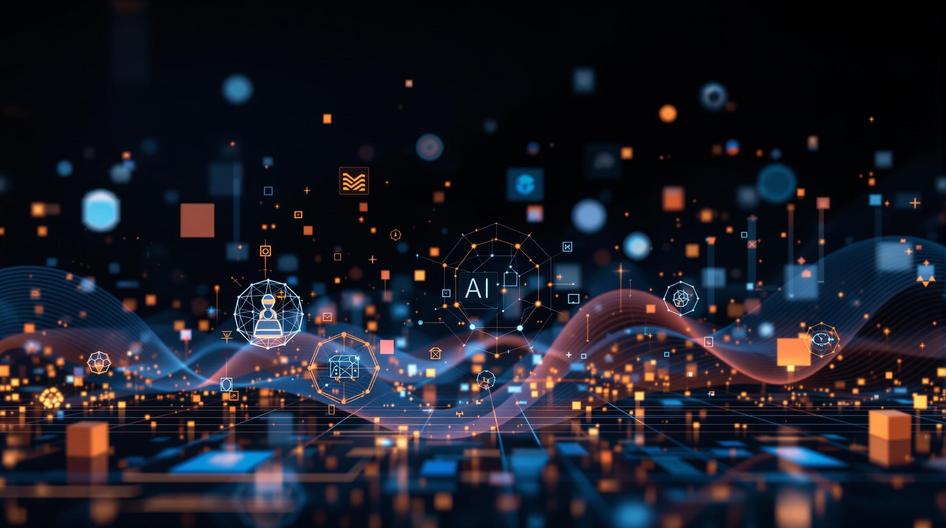
Edge AI’s Next Leap: How Powerful Collaborations and Infrastructure are Redefining On-Device Intelligence
Artificial intelligence at the edge is no longer a slogan. It is quickly becoming the backbone of robotics, automation, and distributed computing. A flurry of new partnerships and platforms is unlocking fresh headroom for developers and enterprises, and it points to a real shift away from cloud-only thinking toward responsive intelligence that lives where data is created.
Edge AI: The Rising Tide
Edge AI means running models locally on devices or near the network’s boundary instead of sending everything to centralized data centers. That design cuts latency, strengthens privacy, and makes real-time decisions possible at the point of data capture. Think about robot arms on a factory line, cameras that detect safety hazards, or retail sensors that manage stock. Do you want a round trip to a distant server, or a decision made in tens of milliseconds on site?
For users, this can translate into faster apps, better privacy, and fewer outages when network links hiccup. Traders and market makers already care about milliseconds, and the same logic applies to DeFi bots that chase on-chain opportunities when smartphones evolve into AI edge nodes. Developers gain tighter control over inference costs and performance. Investors see a clearer path to scalable unit economics. Policymakers get more options for compliance with data residency and safety rules.
Advantech, Qualcomm, and Edge Impulse: A New AI Ecosystem
One of the clearest signals this year comes from Advantech’s collaboration with Qualcomm Technologies and Edge Impulse. The trio is aligning hardware, system software, and developer workflows, an approach that lowers the friction to move from prototype to production at the edge. Advantech’s platforms now integrate the Qualcomm Dragonwing IQ-9075 processor with Edge Impulse’s tooling so teams can build, train, and deploy models straight to devices. The move is outlined in Advantech’s announcement in the Financial Times and covered by The Robot Report.
At the center of this stack sits the Dragonwing IQ-9075. It targets harsh edge environments and workloads like outdoor autonomous mobile robots and industrial delivery bots. Advantech’s AFE-A503, powered by the same silicon, adds long-battery designs, AI acceleration, and modular sensor support. The company’s Robotic Suite ships with ROS2 and AI SDKs to fast-track development. If you build AMRs or inspection drones, this kind of turnkey integration matters. It can compress your time to market and reduce integration risk that often derails pilot programs.
For context on how these moves fit a bigger pattern, see our deep dive on how partnerships and silicon are reshaping connected intelligence at the edge in Edge AI’s hardware revolution and the broader infrastructure trends in AI and smart networks.
Cisco Levels Up the Edge Infrastructure
Chips and dev tools are only half the stack. You also need infrastructure that can move, protect, and orchestrate data at scale. Cisco stepped in with its Unified Edge platform, a design that pulls compute, networking, storage, and security closer to where data originates. The platform runs on Intel Xeon 6 silicon and prioritizes high throughput with minimal latency. Cisco’s announcement positions Unified Edge as a modular, secure base for distributed AI, with a unified management layer that aims to cut operational drag. The company details the approach in its newsroom post.
This matters for smart retail, logistics hubs, and factories where inference happens continuously. When a vision model flags an anomaly on a conveyor, it should not wait on a jittery WAN link. It needs to act, then sync. The same applies to agentic workflows that string models and tools together. Curious how autonomous agents change enterprise workflows? Our report on AI agents in business breaks down patterns we expect to see at the edge.

Closing the Latency Gap: Why Edge Is Essential
This conversation is not only about how much you can process. It is about how fast. Many applications still depend on big models in distant clouds. Those models are powerful, but the round trip adds delay that breaks feedback loops. Edge inference changes the equation. Run small or distilled models locally, then escalate to larger models when confidence drops. That hybrid pattern keeps responses fast while preserving access to heavyweight reasoning when needed.
Crypto markets offer a familiar analogy. On volatile days, Ethereum gas fees spike and mempools clog, which can throttle arbitrage and liquidation bots on decentralized exchanges. Could a local policy model triage opportunities first, then selectively trigger on-chain transactions to control slippage and cost? We see similar logic in industrial settings where milliseconds decide whether a machine halts or a part gets scrapped. RCR Wireless discusses the broader context in its overview of edge computing in the age of AI.
For traders, edge logic can help route orders faster and manage risk when links degrade. For developers, it means smaller, cheaper models that still meet service-level targets. Investors should watch how edge-first products defend margins when cloud inference costs fluctuate. Regulators can see practical privacy gains when sensitive data never leaves the site.
If you want the strategic view of how edge and Web3 could intersect, including tokenized data markets and payments, dive into our analysis on AI and Web3 infrastructure and our primer on the Model Context Protocol that ties tools and models together.
Private 5G and On-Prem AI: The Enterprise Frontier
Private 5G and local inference form a potent pair for large sites. John Deere’s view of industrial networking highlights how microagents, lightweight AI components, can run directly on edge hardware for routine decisions and escalate to the cloud only when needed. This combination improves determinism, reliability, and security for time-sensitive control systems. RCR Wireless explores the approach in its piece on private 5G and industrial AI.
Add generative AI on top, and you get new workflows that auto-generate inspection reports, draft PLC code suggestions, or summarize incident logs for shift handoffs. In sectors with strict uptime needs, even small efficiency gains compound quickly.
This evolution also touches crypto and payments. Smart retail sites could pair edge vision with compliant stablecoin settlement in the back office to reduce reconciliation overhead. That hinges on policy and market structure. Stablecoin rules, travel rule enforcement, and treasury operations all matter. Our coverage on the AI crypto nexus tracks how regulation and liquidity shape adoption.
The Road Ahead: From Hype to Everyday Reality
Taken together, the latest hardware, software, and infrastructure moves point to a pragmatic edge roadmap. The barriers to building and shipping edge AI are falling. Expect more specialized chips, unified management planes, and toolchains that hide complexity without locking teams in. Also expect budget scrutiny. Teams will ask whether a local model with quantization and pruning performs well enough before paying for large cloud inference.
For users, the result is faster services that respect privacy by default. For traders, the edge may enable new tactics that react to on-chain signals with less delay. Developers will lean into model distillation, evals, and observability to keep systems honest. Investors should watch for platforms that convert pilots into repeatable deployments with strong gross margins. Policymakers will likely focus on safety, auditability, and clarity on where data lives.
Looking ahead, edge AI is set to intersect with tokenized data markets and decentralized compute. That could encourage models that pay for verified datasets or share revenue with device operators. It is early, and not every scheme will survive. Halving cycles change miner incentives, and regulatory shifts can rewrite the rules for stablecoins or DAOs. But the direction is clear. Intelligence is moving closer to the source.
If you want the broader industry context, read our reports on how edge computing reshapes industries and how smart networks amplify AI. For a snapshot of how agentic systems could stitch these layers together, see our guide to AI agents.
In a world where every millisecond counts, the edge is no longer the frontier. It is the foundation for the next wave of digital transformation.





























































































